One visit to Florence was not enough, we had to come back for a second round. A third and a fourth would have been good, this place is inexhaustible, but sadly we didn’t have time so we needed to be selective. Top of the list was the Uffizi but not until we’d had an extremely indulgent breakfast at Rivoire in Piazza della Signoria, a great place to watch our fellow tourists.
They’re hard to ignore. Everywhere day trippers on a mission. Just like us. Eager sightseers with our absorbent cameras soaking up the city, happy to share just a brief moment of its momentous history.
In Florence there’s no escape from the camera. By the end of the day we’re all in each other’s photos.
The world famous Uffizi gallery is the most important collection of paintings in Italy and one of the great art collections of the world. It is housed in the massive Palazzo degli Uffizi, which extends from Piazza della Signoria to the Arno. Vasari was commissioned by Cosimo I to erect a building here to serve as government offices (uffici, hence ‘uffizi’).
Blue Guide Tuscany: Alta Macadam
Rucellai Madonna: Duccio
Room 2: This gallery provides a fitting introduction to the collection, illustrating Tuscan painting of the 13th century. Three huge paintings of the Madonna Enthroned (known as the Maestà) dominate the room. On the right, the Madonna in Maestà by Cimabue (c.1285), painted for the church of Santa Trinita, marks a final development of the Byzantine style of painting, where a decorative sense still predominates. On the left is another exquisite version of this subject, the Rucellai Madonna by Duccio di Buoninsegna, commissioned by the Laudesi confraternity in 1285 for their chapel in Santa Maria Novella. The frame, with painted roundels, is original. The painting was traditionally attributed to Cimabue, but is now recognised as the work of the younger Sienese artist Duccio, who is known to have worked in Cimabue’s studio.The Madonna in Maestà by Giotto (in the centre), painted just 25 years later for the church of Ognissanti, has a sense of realism which had never been achieved in medieval painting before. The figure of the Madonna has acquired a new monumentality and she is set in a more clearly defined space. This is considered one of the masterpieces of an artist whose work heralded a new era in Western painting.
Blue Guide Tuscany: Alta Macadam
Annunciation with St.Francis, St.Nicholas, St.Thomas and a Sainted Evangelist;
the Prophets Elijah, Aaron, Malachi and Isaiah: Luca di Tommè
Madonna and Child Enthroned with St.Peter, St.Paul and Angels: Bernardo Daddi
Adoration of the Magi
Christ in Judgement, the Annunciation and Prophets, (in the pinnacles)
The Nativity, the Flight into Egypt and the Presentation in the Temple (in the predella):
Gentile da Fabriano
Rooms 5 and 6: Another important painter of this period was Gentile da Fabriano. He was born in the Marche but moved to Florence in 1420 at the invitation of Palla Strozzi, who commissioned the richly decorated Adoration of the Magi in 1423, in which the horses’ bridles and the brocaded costumes, as well as the crowns worn by the Kings, are highlighted in gold. This famous work has a charming, fairy-tale quality and numerous delightful details including the animals and the servant bending down to take off one of the king’s spurs, and the two graceful serving ladies behind the Madonna examining one of the Kings’ gifts. The predella is also exquisitely painted, with a beautiful scene set in a grove of orange trees showing the Flight into Egypt.
Blue Guide Tuscany: Alta Macadam
Madonna of Humility with Angels: Nicola da Guardiagrele
Madonna of Humility: Masolino, Tommaso di Cristoforo Fini
Portraits of the Duke and Duchess of Urbino, Federico da Montefeltro and Battista Sforza:
Piero della Francesca
Room 8: In the centre of the room is the famous diptych by Piero della Francesca with the portraits of Federico da Montefeltro and his duchess, Battista Sforza, in profile against a superb detailed landscape stretching into the far distance in a transparent light. On the reverse are their allegorical triumphs in a rarefied atmosphere with another wonderful landscape. These exquisite works, profoundly Humanist in spirit, were painted in Urbino around 1465 in celebration of this famous Renaissance prince, always depicted in profile since he lost his right eye in a tournament.
Blue Guide Tuscany: Alta Macadam
Adoration of the Child with SS. John the Baptist as a child and Romauld,
the Eternal Father and the Holy Ghost. ‘Adoration of Camaldoli’: Filippo Lippi
Annunciation: Leonardo da Vinci
Madonna and Child with Angels, St. John the Baptist and St. Jerome: Matteo di Giovanni
Sue was on cloud nine in seventh heaven, meeting old friends and reliving the wonders of her sixth form A Level studies in Renaissance art.
Scenes from the Life of Christ (Epiphany; Circumcision; Ascension): Andrea Mantegna
Madonna and Child: Jacopo Bellini
Portrait of Cardinal Carlo de’Medici: Andrea Mantegna
Madonna and Child with St. Francis and St. Anthony: Francesco Raibolini, ‘Il Francia’
Looking north along Piazzale degli Uffizi between the two wings of the gallery towards the Duomo.
Looking west down the Arno to Ponte Vecchio and further bridges beyond.
Doni Tondo: Michelangelo
Sleeping Ariadne
Room 25: Here is the famous Doni Tondo of the Holy Family by Michelangelo, his only finished tempera painting. It was painted for the marriage of Agnolo Doni with Maddalena Strozzi, when the artist was 30 years old. It breaks with traditional representations of this familiar subject and signals a new moment in High Renaissance painting, pointing the way to the Sistine Chapel frescoes. It is still in its splendid original frame.
Blue Guide Tuscany: Alta Macadam
Portrait of Gabrielle d’Estrées and one of her sisters: Scuola di Fontainebleau
Portrait of Virginia de’Medici: Jacopo Ligozzi
Portrait of a Man with a Medal of Cosimo the Elder: Sandro Botticelli
Rooms 10-14: These rooms, converted into one huge space with the rafters of the stage of the old Medici theatre exposed, are now home to masterpieces by Botticelli, which include both religious and mythological subjects… Botticelli’s skill as a portrait painter is also shown in the Portrait of a Man in a Red Hat, a very fine and well-restored painting of an unknown sitter who is holding a medal of Cosimo il Vecchio.
Blue Guide Tuscany: Alta Macadam
Birth of Venus: Sandro Botticelli
The Birth of Venus is perhaps the most famous of all Botticelli’s works. Probably painted for Lorenzo di Pierfrancesco, it hung in the Medici villa of Castello. The pagan subject is taken from a poem by Politan and illustrates Zephyr and Chloris blowing Venus ashore while Hora, in her fluttering dress, hurries to cover her nakedness. The elegant figures are painted with a remarkable lightness of touch in a decorative linear design. The classical nude figure of Venus balances on the edge of a beautiful scallop shell as it floats ashore. A strong wind blows through this harmonious Graeco-Roman world.
Blue Guide Tuscany: Alta Macadam
Madonna and Child with Six Angels, ‘Madonna of the Pomegranate’: Sandro Botticelli
Madonna and Child with Five Angels, ‘Madonna of the Magnificat’: Sandro Botticelli
Primavera: Sandro Botticelli
The Primavera is one of his most important and most famous pictures. It was painted probably c.1478 for Lorenzo di Pierfrancesco de’Medici, Lorenzo the Magnificent’s younger cousin. An allegory of spring, the season which began the year in 15th century Florence, it is thought to have been inspired by a work of Politan, although its precise significance is still debated. There is a rhythmic contact between the figures, who are placed in a meadow of spring flowers within a dark orange grove, the Garden of the Hesperides of Classical myth. To the right, Zephyr chases Flora and transforms her into Spring, who is shown bedecked with flowers. In the centre Venus stands with Cupid above her, and beyond the beautiful group of the Three Graces united in dance is the figure of Mercury (perhaps an idealised portrait of Lorenzo the Magnificent).
Blue Guide Tuscany: Alta Macadam
Madonna and Child in the Glory of the Cherubs: Sandro Botticelli
Crouching Venus
The Finding of Vulcan on Lemnos: Piero di Cosimo
Then as we were leaving, we chanced upon an exhibition of paintings by Piero di Cosimo. After a relaxed attitude to photography in the rest of the museum it came as a shock to have my wrist slapped for taking this photo. I put my camera away and observed some extraordinary paintings.
The Discovery of Honey: Piero di Cosimo
The exhibition originated at the National Gallery of Art in Washington, D.C. and there’s a review here. Afterwards we made our way over the river to Oltrarno towards Palazzo Pitti and the Boboli Gardens.
Statue of Abundance
The Casino del Cavaliere and the Museo delle Porcellane.
The Giardino del Cavaliere is a secluded walled garden with box hedges laid out at the time of Cosimo III on a bastion constructed by Michelangelo in 1529. The view from the terrace is one of the most charming in Florence, embracing the rural outskirts of the city. The fields and olive groves are dotted with beautiful old villas.
Blue Guide Tuscany: Alta Macadam
Beyond the garden stands an expansive stretch of the city walls and above it the Forte di Belvedere with superb views across the city, which was where we went next…




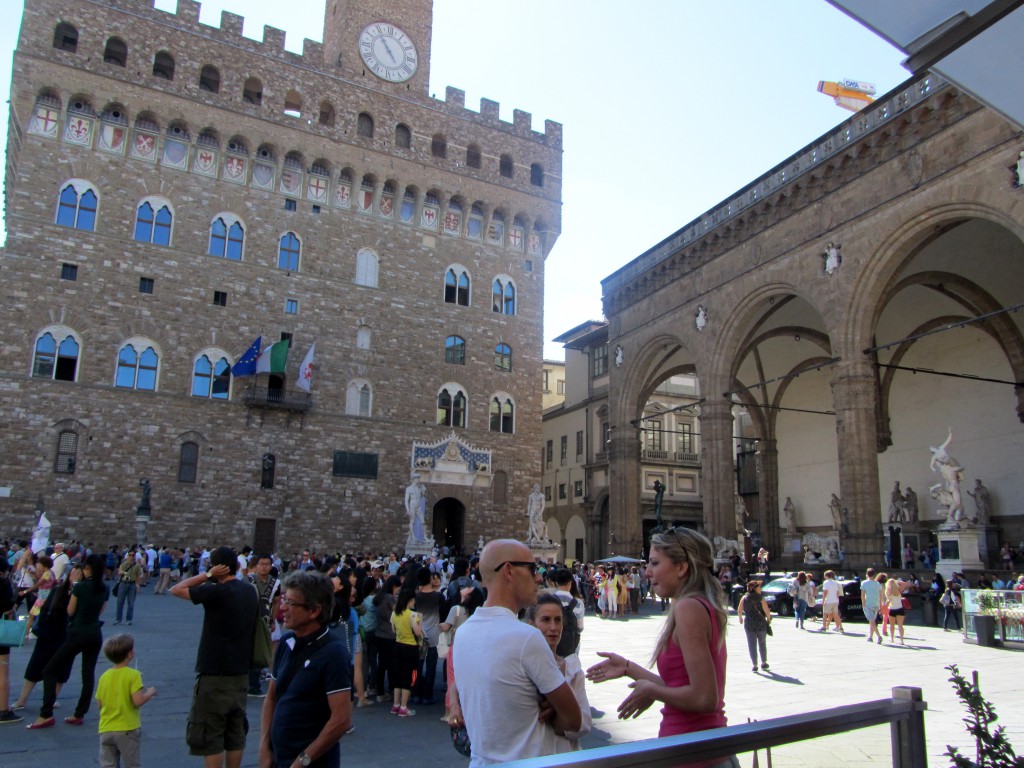
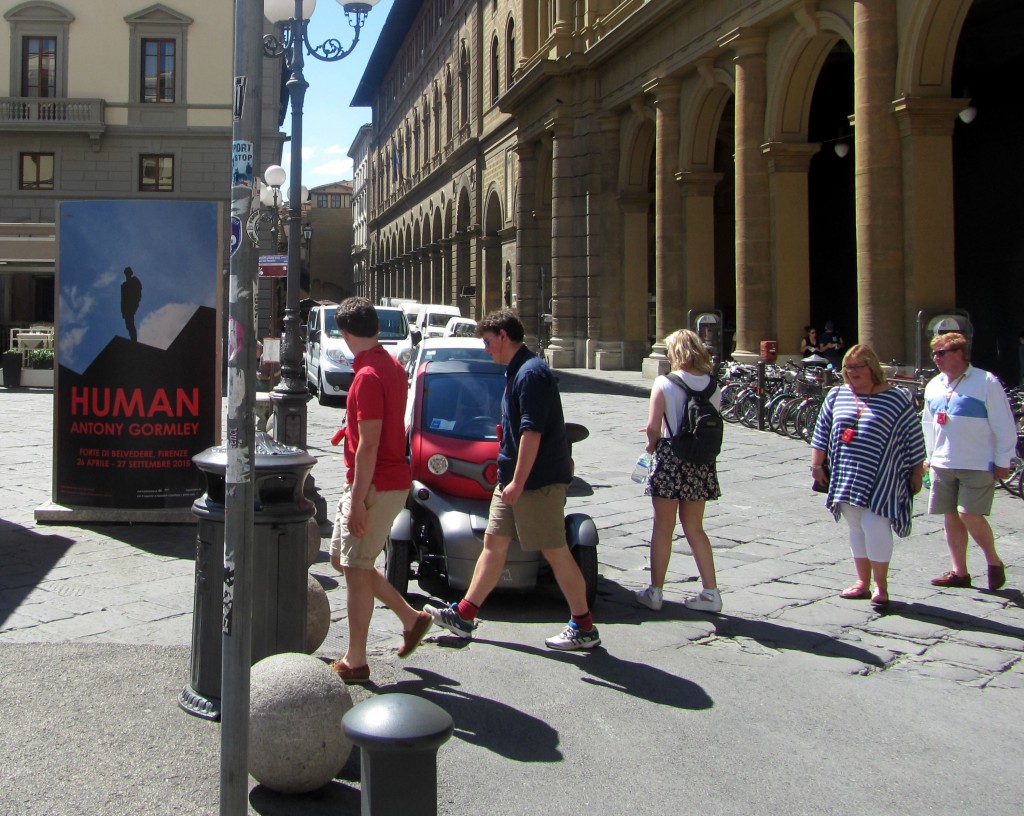







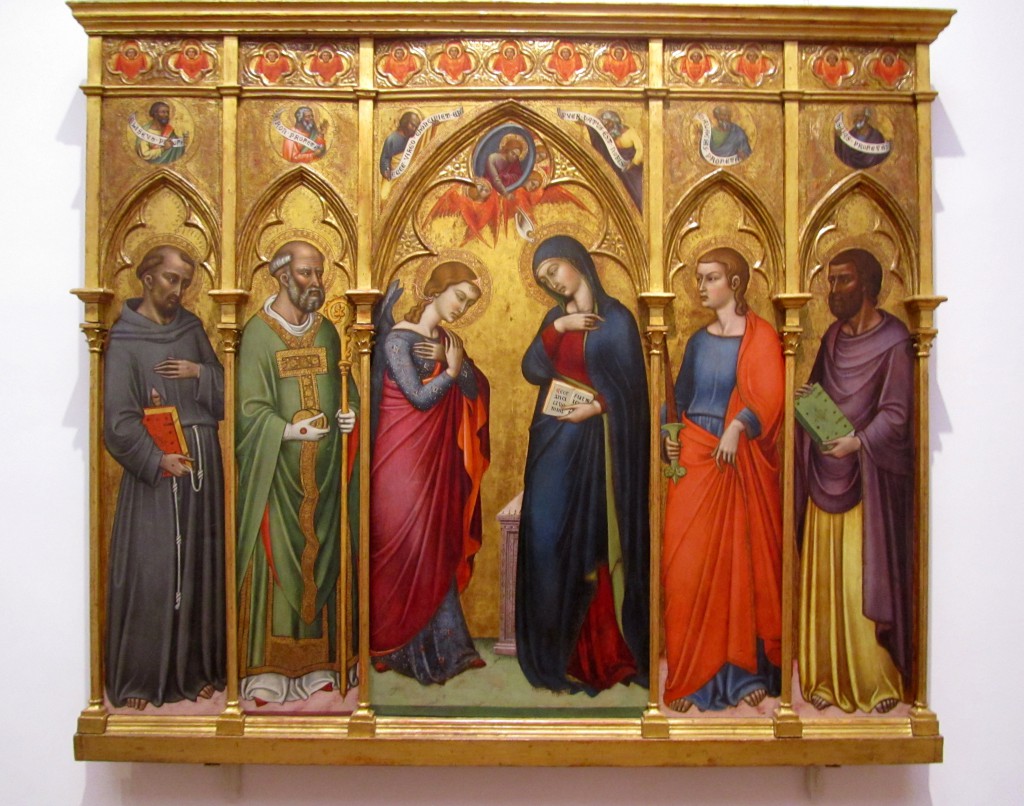




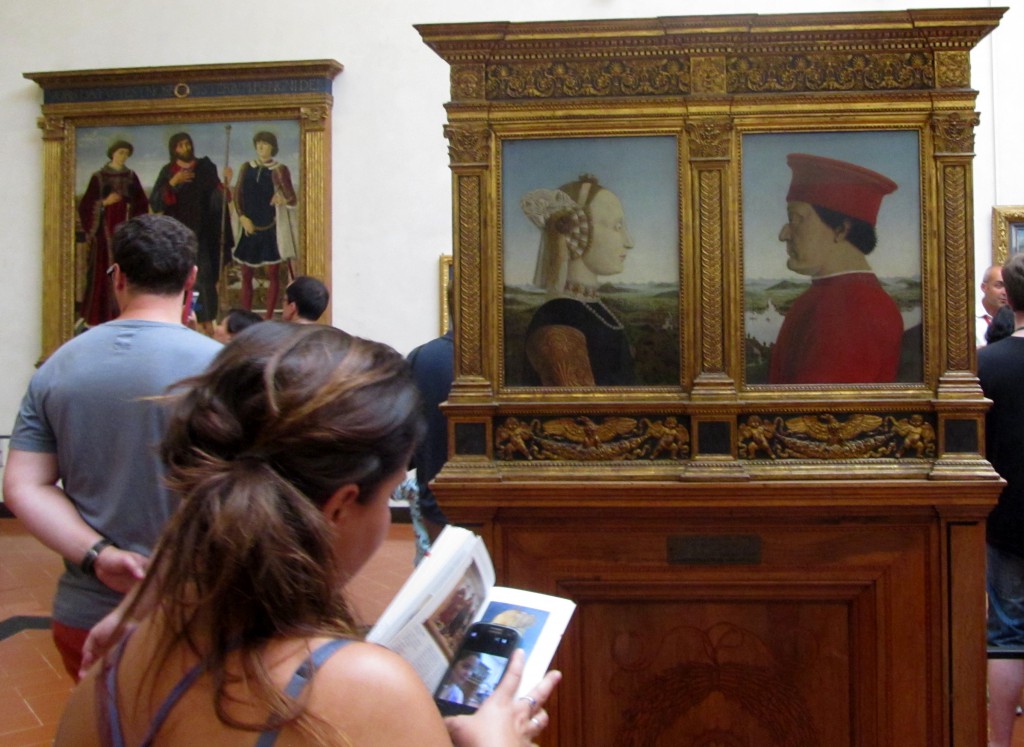

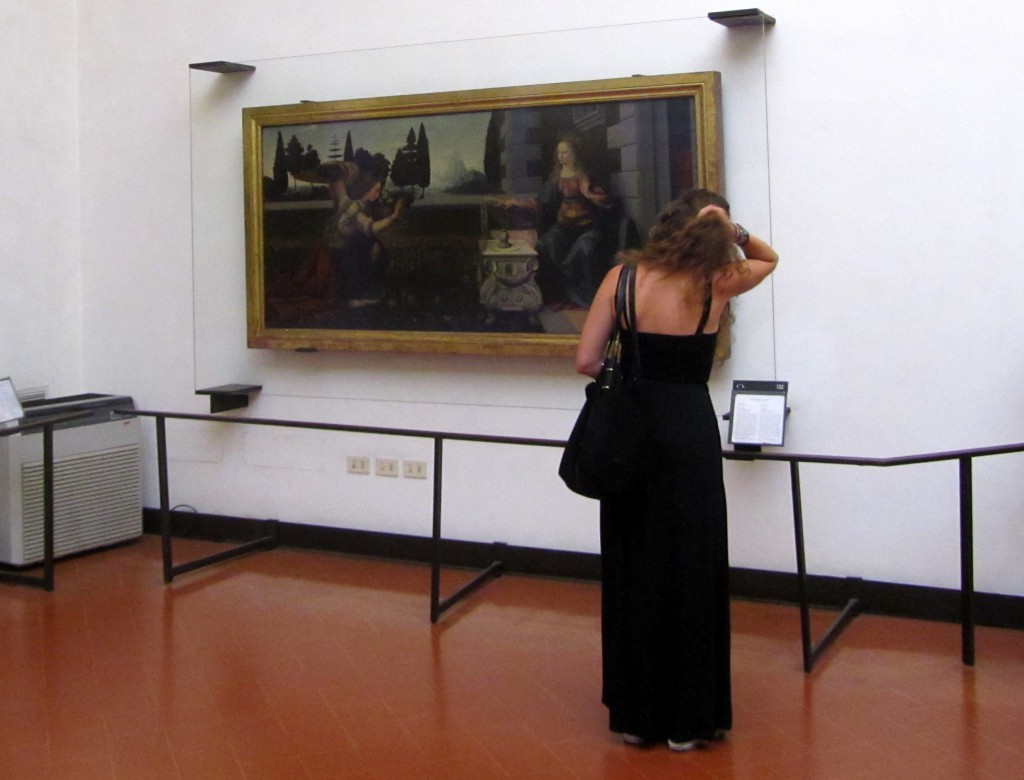

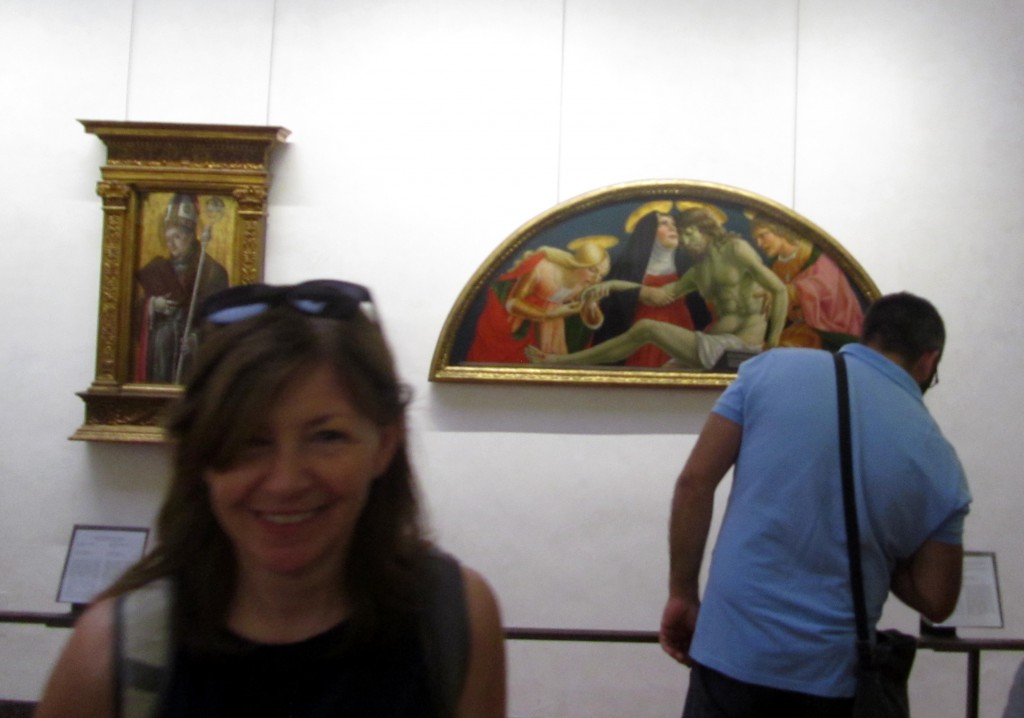



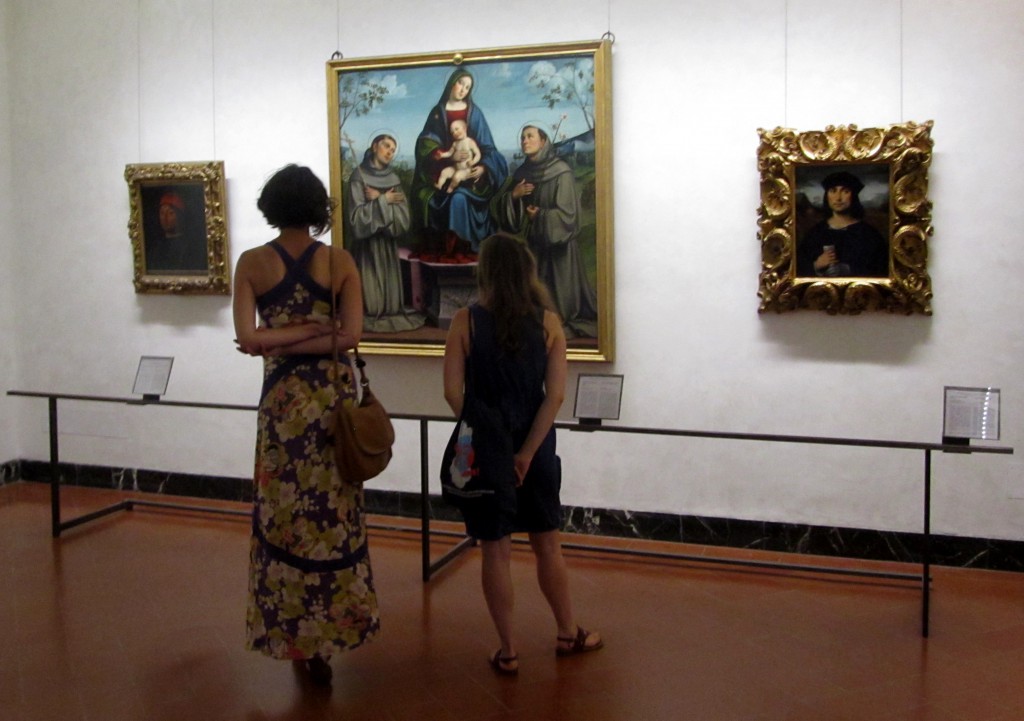

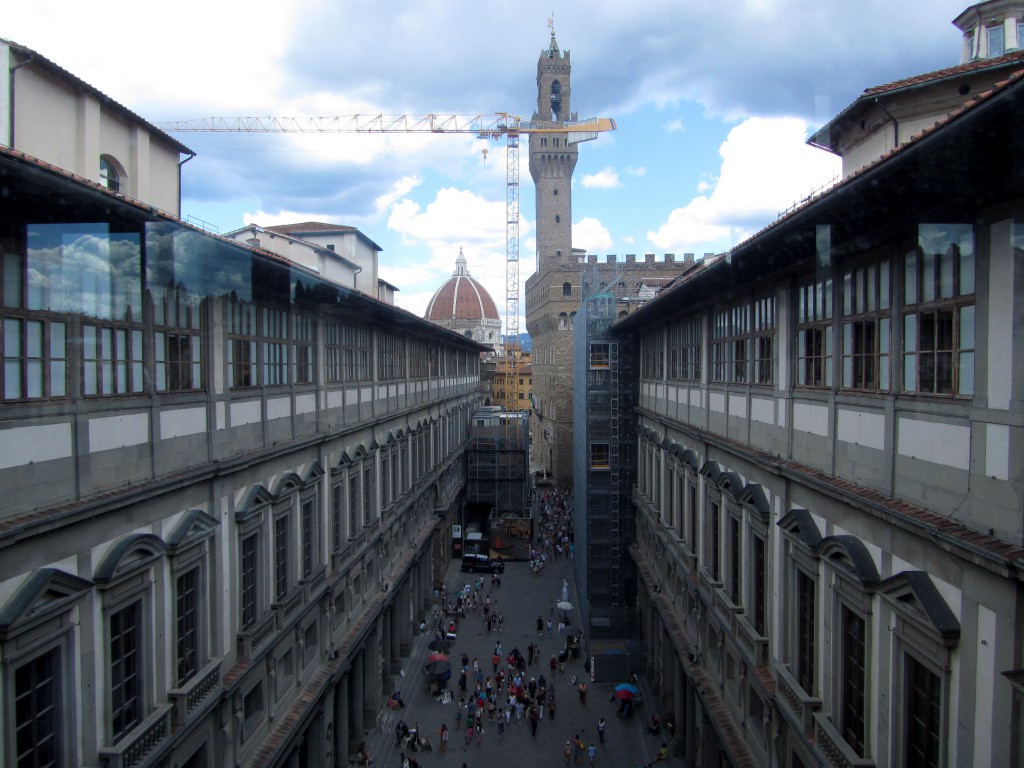
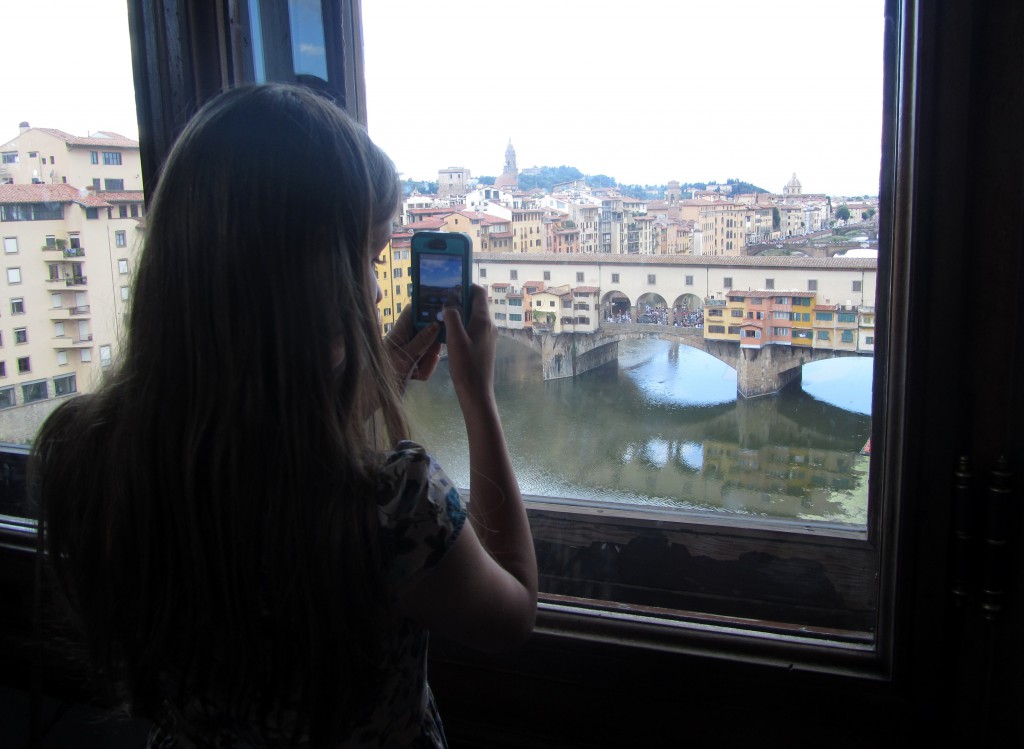
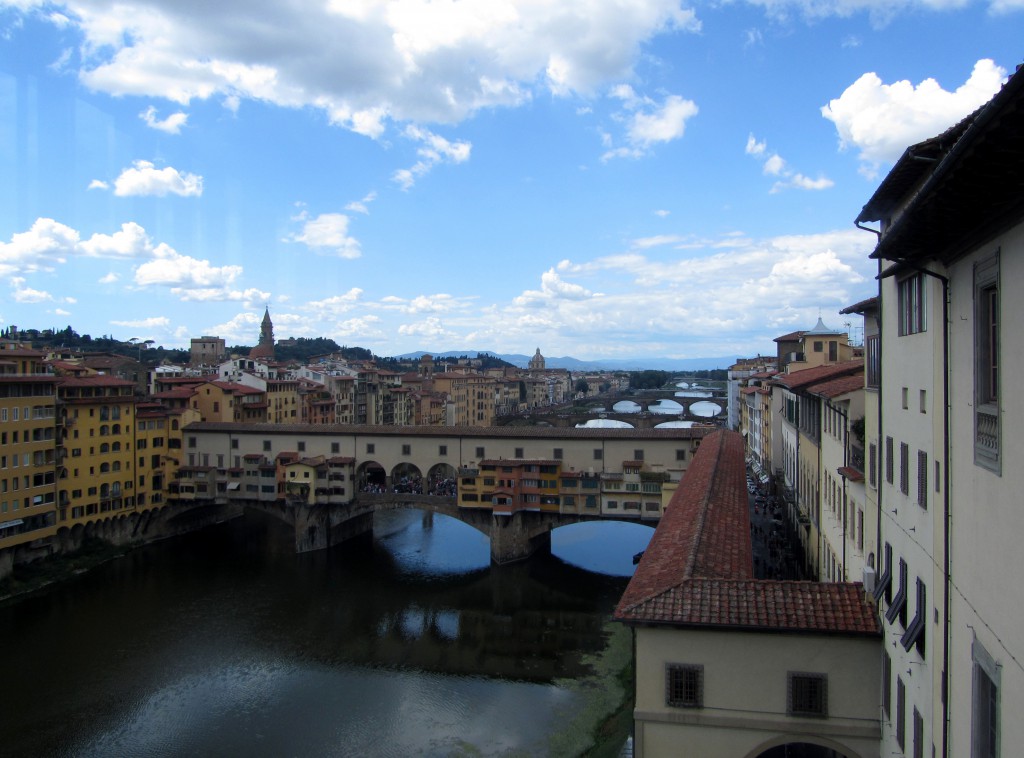
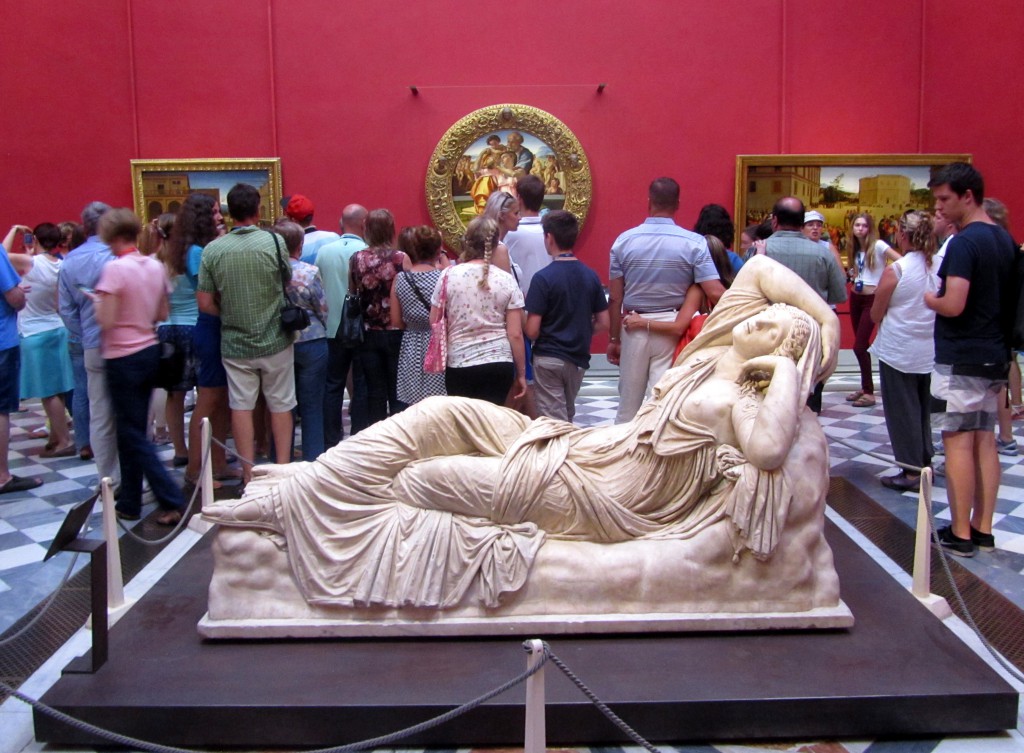

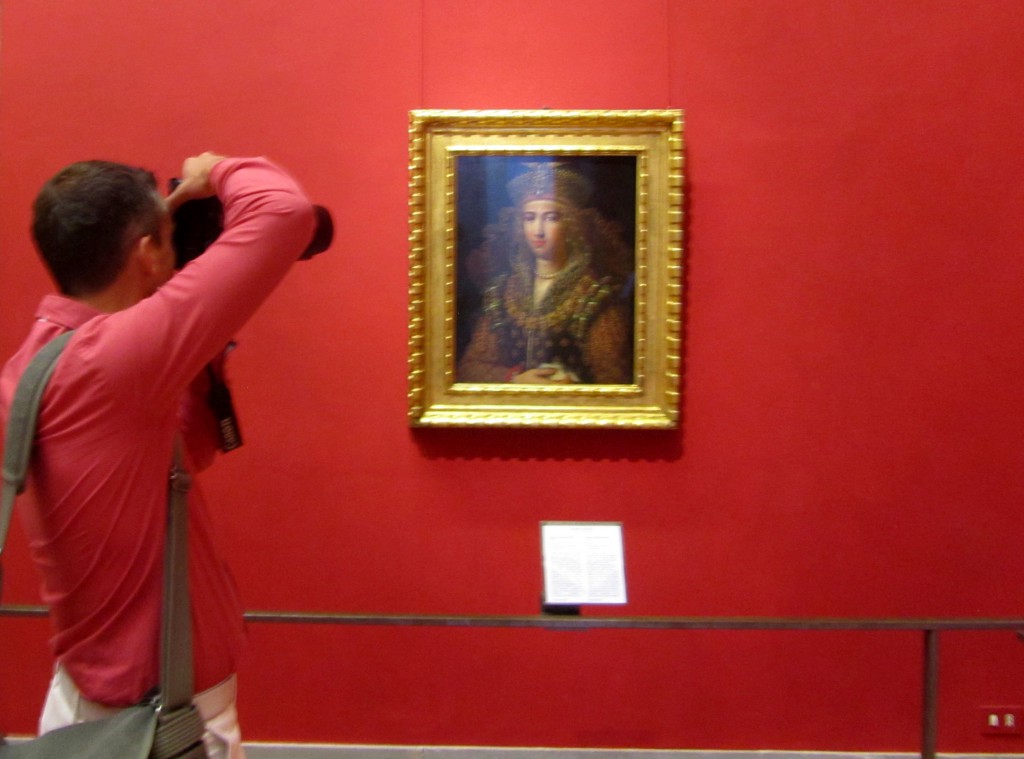


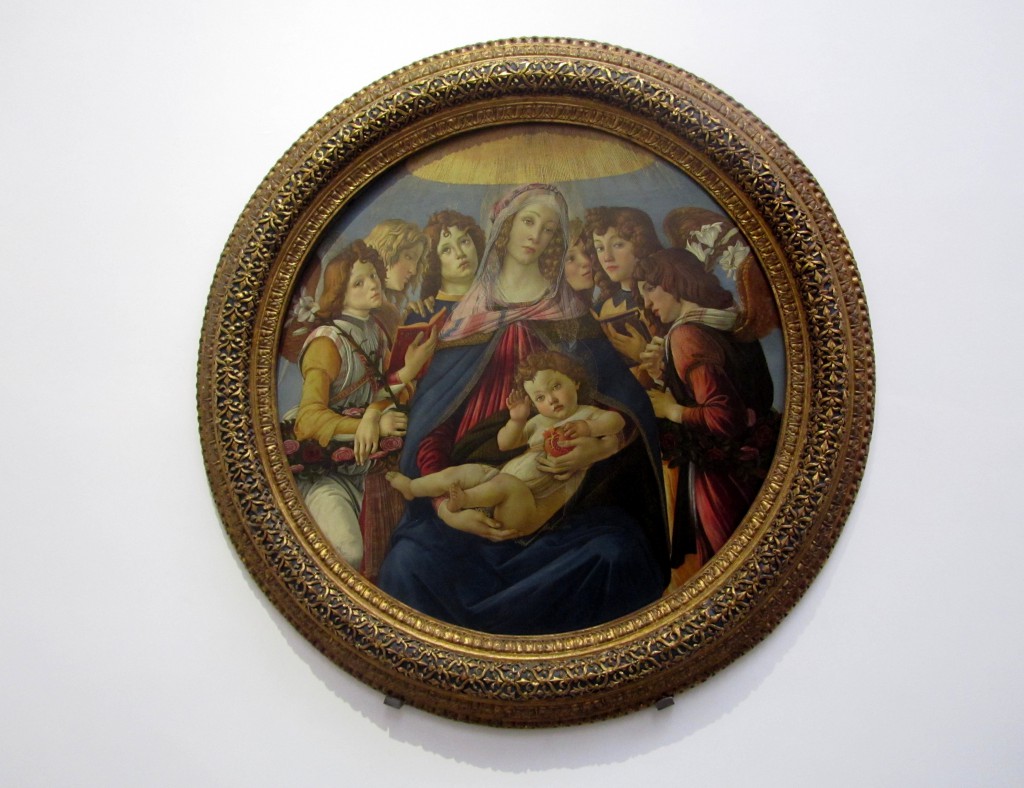
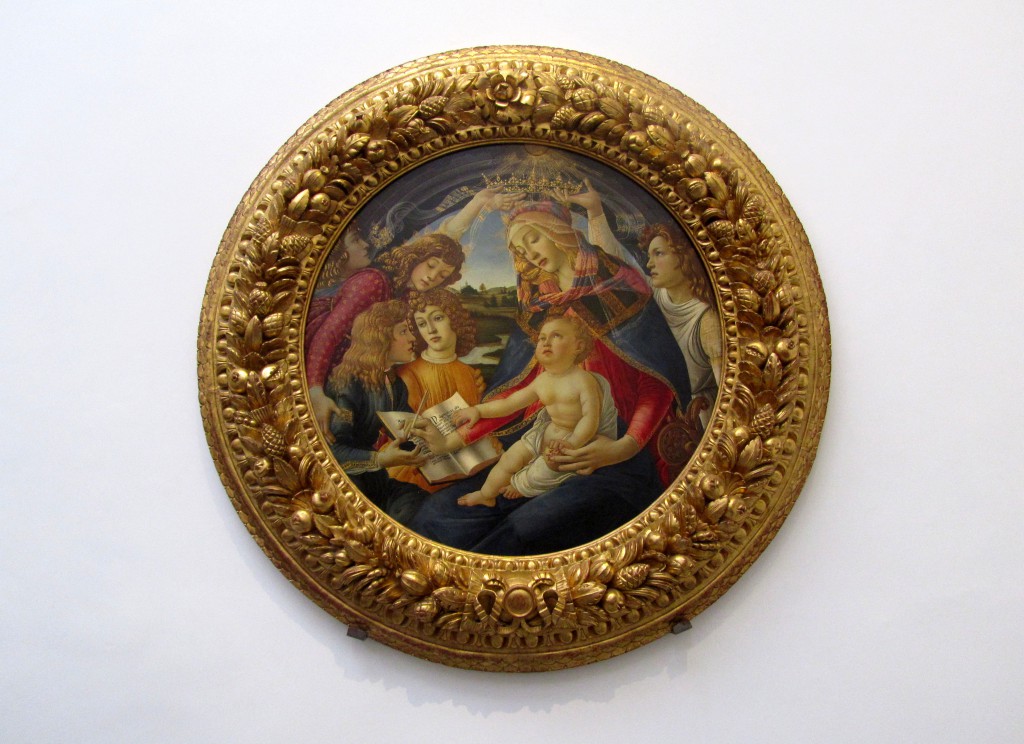




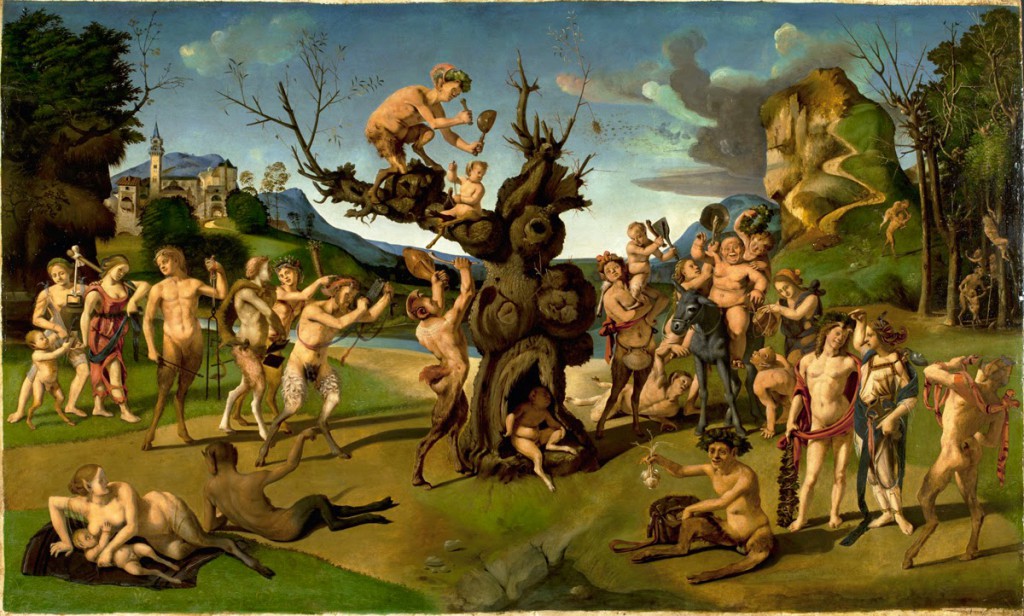

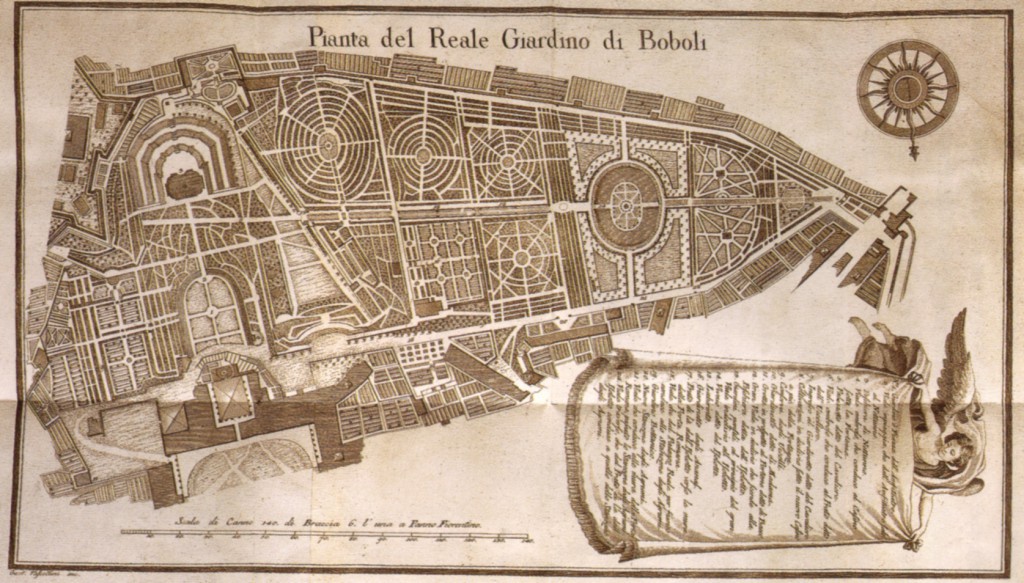



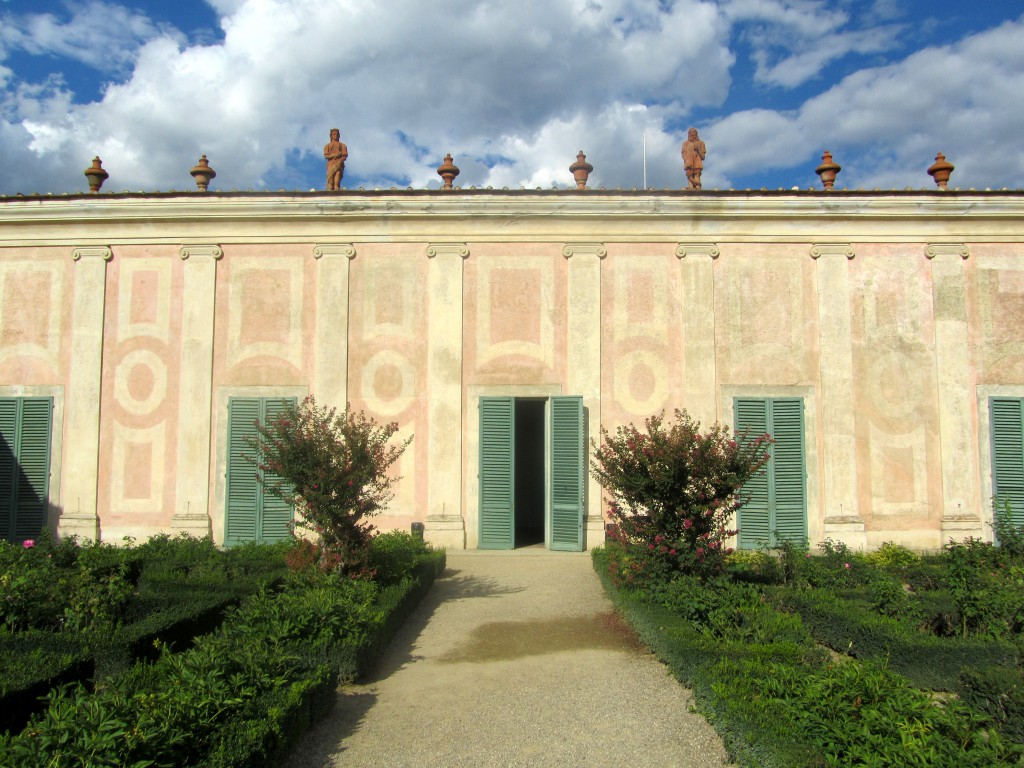


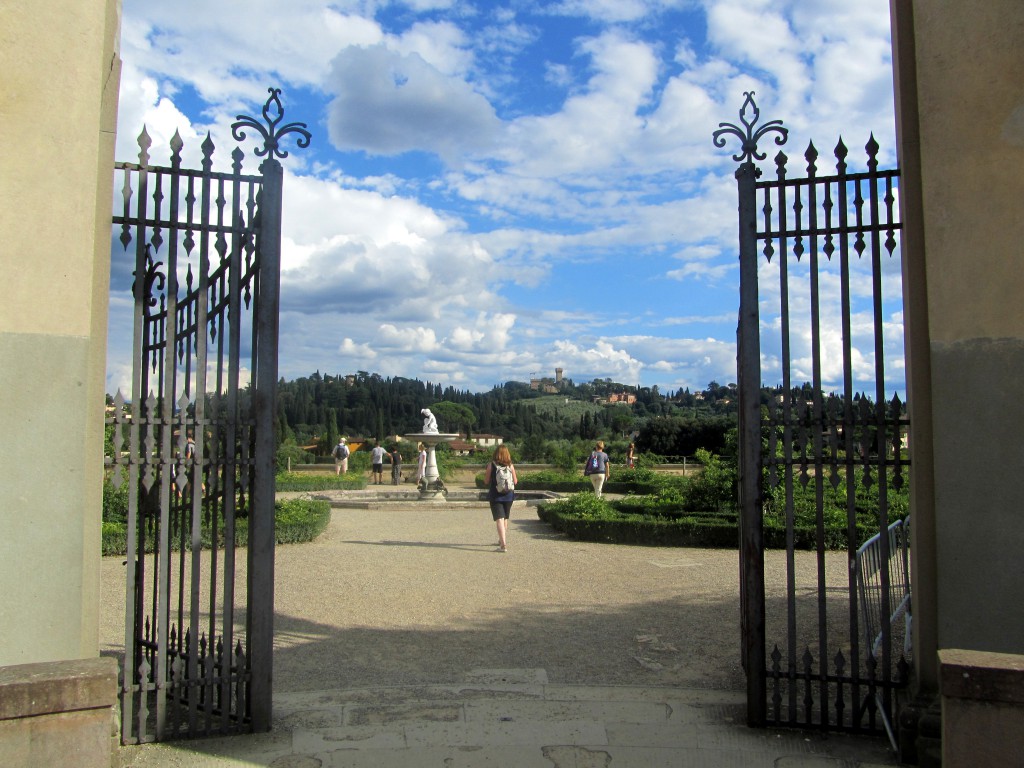

One thought on “Another Look At Florence”